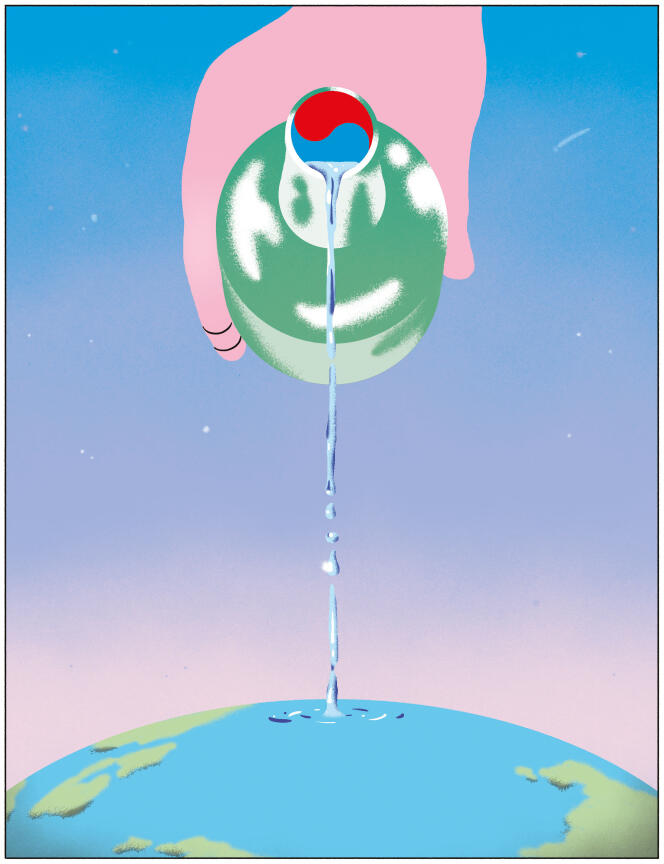Why lie to yourself? When “L’Epoque” asked me, for a special Korea report, to write about soju, my brain displayed a huge white screen. Absolute emptiness.
Its phonetic proximity reminded me of shochu, a Japanese spirit made from the distillation of rice or other starchy ingredients, so I suspected that it was a relatively similar Korean alcohol. Only one thing was certain: I had never drunk it. And, of course, as a specialist on wines and other drinks for the newspaper, I was red in the face at so much ignorance. All shame drunk, we had to learn from scratch.
Start of research on the Internet, first article read, I almost fall off my chair. If you type “soju” into Google, one of the first hits tells you it’s “the best-selling alcohol in the world”. Here’s some news! South Korea has an area of 100,000 square kilometers, a size slightly larger than that of the Nouvelle-Aquitaine region; hardly credible, therefore, that it produces, consumes and exports more of its local alcohol than the planet absorbs whiskey or vodka. And then, I have my pride. If it really were the most common alcohol on the globe, I would have already tasted it.
Rice, sweet potato, barley, tapioca…
The information, however reproduced on numerous sites, is erroneous, obviously, but is based on an observation established in 2020 by the British magazine The Spirits Business and analyst Euromonitor International, which compiled sales of spirits brands. We learn that the best-selling alcohol brand in the world is Jinro, a Korean brand producing soju, which claims 780 million liters sold in 2019. It is followed by Indian whiskeys; names known in France like Smirnoff, Johnnie Walker or Jack Daniel’s respectively obtaining only 6e9e and 11e ranking places.
I learned in passing that soju is, like shochu, a spirit obtained by distillation of fermented rice, for the more traditional ones, or by distillation of sweet potato, potato, barley, buckwheat or tapioca, for the good bottles. walk ; in short, anything that contains starch, which is reminiscent of vodka. On the other hand, it is cut with water and, although it can have an alcohol content of 42%, most of the time it is only 20%, which makes it easier to drink. Korea has been drinking it for over seven hundred years; it is a purely traditional drink.
You have 65% of this article left to read. The rest is reserved for subscribers.
